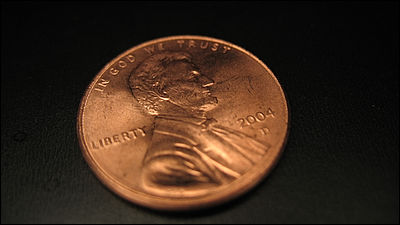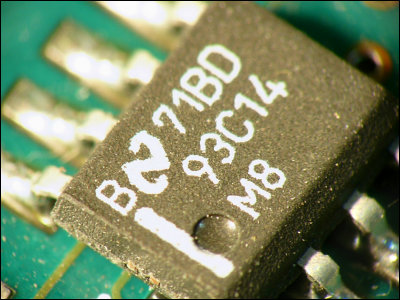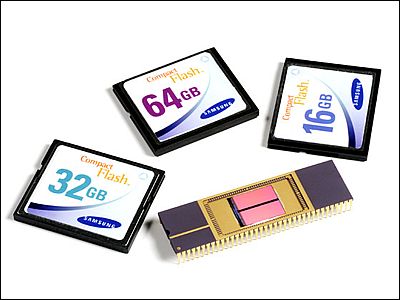Semiconductor giant Micron explains how DRAM changed the world

June 2024 marks the 56th anniversary of
How DRAM changed the world | Micron Technology Inc.
https://www.micron.com/about/blog/memory/dram/how-dram-changed-the-world

The Beatles' album ' Revolver ' was released and the movie ' A Fistful of Dollars ' was released in 1966. Computers at the time were analog devices that required paper tape and punch card readers.
In 1966, Dennard invented Dynamic Random Access Memory (DRAM). DRAM was patented in 1967 and approved the following year on June 4, 1968. At the time of the development of DRAM, Dennard led a research team at IBM and was experimenting with binary data on a capacitor as a positive or negative charge. When the charge leaked from the capacitor, Dennard invented a platform that processed everything with a single transistor. This significantly reduced the size.
At the time, volatile random access memory (RAM) was already in widespread use, but it was complex, bulky, and consumed a lot of power. Large-scale magnetic storage systems also existed, but they required a room-sized device to store 1MB of information.
So Dennard came up with the idea of fitting the next generation of magnetic memory into a square 25cm on a side. The key to making this happen was to pack the RAM into a single transistor. Suddenly, computers could fit a billion RAM cells on a single chip.
The world's first DRAM was born in this way: the 1103. Released in 1970, the 1103 surpassed magnetic core memory in just two years and became the best-selling semiconductor memory chip in the world. Until the mid-1970s, the 1103 was the industry standard.

By
'For 55 years, DRAM has evolved with each generation. Not only has DRAM replaced earlier magnetic technologies, it has become the foundational technology for an industry that has transformed human society, from how we work to how we play, and even how we wage war,' IBM wrote .
At the time of writing, DRAM is available in a variety of modules ( DDR , LPDDR , GDDR , HBM , etc.) and form factors ( UDIMM , SO-DIMM , RDIMM , etc.) and is widely used in everything from smartphones to cloud servers, supporting the global economy.
Moore's Law is widely known as the doubling of the integration rate of semiconductor integrated circuits every 18 months (or 24 months), but Dennard also advocates Dennard Scaling , which states that 'the area of transistors can be reduced by 50% while the operating frequency can be increased by 40% for each technology generation.' Dennard Scaling is the technical translation of Moore's Law.
According to Russ Lange, Dennard's colleague at IBM, Dennard predicted the end of Moore's Law and Dennard Scaling. Looking back on that time, Lange said, 'Bob (Dennard's nickname) and I always had lively discussions about whether scaling would ever end. And he would say, 'Yes, scaling will end, but creativity will never end.''
The first Micron DRAM was released in 1981 as a DRAM called '64K DRAM'. 64K DRAM was the product that marked the beginning of Micron's strong leadership in the DRAM and NAND fields and its significant presence in the semiconductor industry.

Micron then introduced the world's smallest 256K DRAM in 1984 and the 1Mbit DRAM in 1987.

Looking back on the innovative days of the early days of DRAM development, Gartej Sandhu, senior fellow in charge of technology pathfinding at Micron, said, 'When I visited IBM's Thomas J. Watson Research Center about 15 years ago, my host took me to Dennard's office. The office was open for visitors and fully functional. I heard that Dennard, who retired a few years ago, still came to the lab for a few hours a week. It's ironic that at the time he invented DRAM, Intel, which was looking for a low-cost alternative to SRAM, was the one that was paying attention to DRAM. Lowering bit cost is essential to expanding the capabilities of computer systems, and Intel went to great lengths to design processor chips to manage DRAM refresh and customize system-level architectures. This established DRAM as an essential element of the modern computing revolution. 'This is a lesson of history that should not be forgotten as we embark on the search for future memory technology solutions. Successful implementation of memory technology always requires a systems-level approach to designing computer architecture and the software around it to deliver the greatest benefit to the end customer.
True to Dennard Scaling, DRAM has continued to get smaller and faster. By 2002, Micron introduced the world's first 1Gbit DDR DRAM product. Since then, Micron has continued to lead memory innovations specialized for PCs, automobiles, IoT, and AI devices for many years. In 2021, Micron released 1 Alpha node-based DRAM products equipped with the world's most advanced DRAM process technology at the time, which achieved significant improvements in density, power consumption, and performance.
This enables ultra-power-efficient, reliable memory and faster low-power DDR5 (LPDDR5) operation for platforms that require best-in-class LPDRAM (low-power DRAM) performance. Micron's LPDDR5 based on the 1 Alpha node achieves 15% power savings, allowing 5G mobile users to perform more tasks on their smartphones without sacrificing battery life. Other releases include the industry's first automotive LPDDR5 DRAM that complies with ASIL D, the most stringent automotive safety standard.

Micron continues to be at the forefront of DRAM evolution at the time of writing, announcing its 1 beta production node in 2022. This node boasts 16Gbit capacity per die and 8.5Gbps data transfer speeds, with 15% more power efficiency and 35% more bit density than the previous generation. Micron's LPDDR5X in the 1 beta node has enabled 8K video recording and video editing on smartphones.
Micron's 1 beta node wafers

Additionally, Micron has announced that it has adopted innovative extreme ultraviolet (EUV) lithography manufacturing for its 1Gamma node DRAM process technology. Micron will be the first semiconductor company to bring production EUV technology to Japan, and plans to begin EUV production at the 1Gamma node in Taiwan and Japan in 2025.
◆ Forum is currently open
A forum related to this article has been set up on the official GIGAZINE Discord server . Anyone can post freely, so please feel free to comment! If you do not have a Discord account, please refer to the account creation procedure explanation article to create an account!
• Discord | 'How much RAM did your first PC have?' | GIGAZINE
https://discord.com/channels/1037961069903216680/1298936178606608416
Related Posts:
in Hardware, Posted by logu_ii







